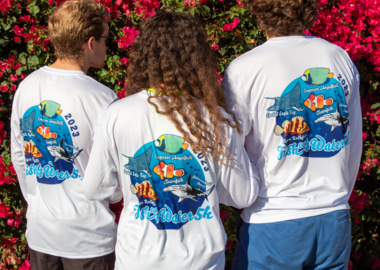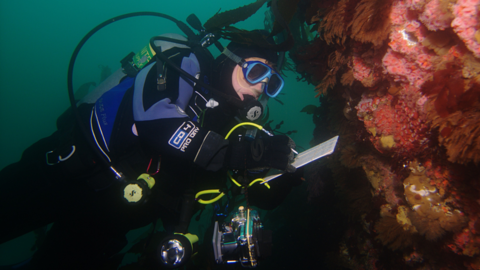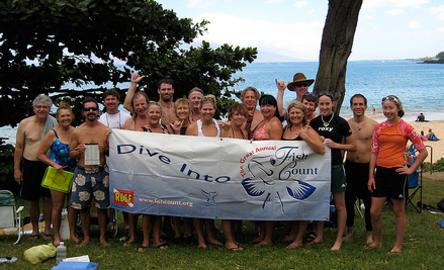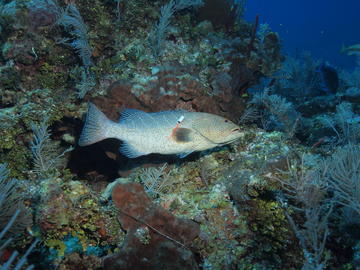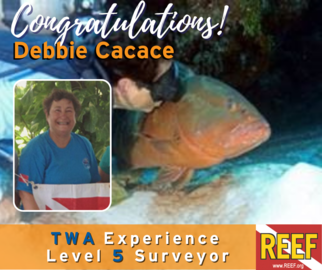Ready, set, register... to join in the 4th annual REEF Fish Out of Water Virtual 5K! From June 5-11, REEF members and ocean enthusiast worldwide are getting active to support of ocean conservation. You can participate from anywhere, and choose your favorite activity - run, walk, hike, bike, or even swim! You can complete the 5K in one go, or break it up throughout the week. When you register for the Fish Out of Water Virtual 5K, you'll also choose to join one of five Fish Teams, including Emperor Angelfish, Clownfish, Hammerhead Shark, Spotted Eagle Ray, or Tiger Rockfish.
Did you know that the data collected by REEF surveyors are separated into two categories based on Experience Level: Novice and Expert? Once you reach Level 4 or 5 in a given survey region, you're considered an Expert surveyor for that region. You can even earn a special Expert Level surveyor Conservation Challenge sticker! Check out www.REEF.org/conservationchallenge for details.
April is Citizen Science Month, and we're gearing up for one of our biggest citizen science iniatives of the year - the Great Annual Fish Count (GAFC)! Held each July, the GAFC is an initiative to encourage divers and snorkelers to participate in the REEF Volunteer Fish Survey Project. This is a great way for anyone to get involved in citizen science and learn more about marine life by joining in ID classes and group dives.
REEF online programs are free and open to everyone! Here's what's coming up this month:
Introducing our April Fish of the Month, the Giant Hawkfish, Cirrhitus rivulatus!
Survey Regions: Giant Hawkfish are found throughout REEF's Tropical Eastern Pacific (TEP) survey region. Click here to see REEF database reports for this species in each region: TEP.
Size: As the largest members of the hawkfish family, they can grow up to 2 feet long!
We are excited to share a new scientific paper published last month in the journal Environmental Biology of Fishes. This study, conducted by our Grouper Moon Project team, reports on the movement patterns and spawning behavior of Tiger Grouper during their reproductive season, helping to shed light on an important, but poorly studied, member of Caribbean coral reef ecosystems.
This study, conducted as part of the Grouper Moon Project, reports on the movement patterns and spawning behavior of Tiger Grouper during their reproductive season. Tiger Grouper is one of over 20 species of reef fish that are known to use the western tip of Little Cayman in the Cayman Islands as a spawning ground. This multi-species aggregation is best known for being home to the largest and one of the last known spawning aggregations of Nassau Grouper.
REEF Into the Blue Book Club will discuss our latest book selection, Four Fish, the Future of the Last Wild Food, by Paul Greenburg
All are invited to join in this meeting, whether you have read the book or not. For more details about Into the Blue Book Club, visit www.REEF.org/bookclub.
This meeting will be led by Hilary Penner, REEF Education Manager, and Kuba Naum, REEF Fellow.
Welcome to Citizen Science Corner, our quarterly feature to celebrate those who recently reached a milestone in our Volunteer Fish Survey Project. Here are achievements from January, February and March 2023:
Juvenile Hamlet Award
The Juvenile Hamlet Award is for individuals who have conducted 500+ REEF surveys. You can read more here. Congratulations to our latest Juvenile Hamlet Club member, Kristi Draper!
Experience Level Advancements

